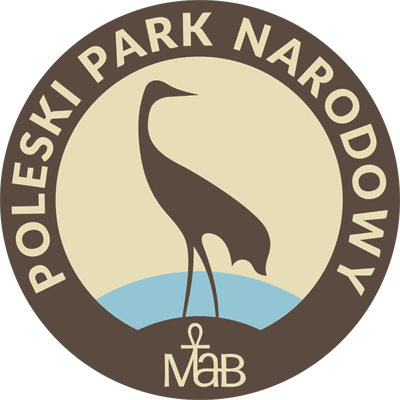Poleski National Park is located in the Lublin province, in the Polish part of Polesie. It was established on May 1, 1990. It includes a number of swamps, bogs and karst lakes and natural forests located on the Łęczyńsko Włodawska Plain, rich in variety of flora and fauna. PNP covers the area of 9,760.2864 hectares, where strict protection zone covers 116.56 ha, 8314.2052 ha remains under partial protection, and landscape protection zone holds 1,329.5212 hectares of land. The area of the buffer zone is as large as 13,624.25 ha . Common crane is the very symbol of the Park.
The most important ecosystems of PNP are bog ecosystems, water and grassland ecosystems, along with scrub and forest ones. They all form a huge mosaic of habitats.
The vegetation world of the park is exceptionally prosperous., rich in species typical to wetlands and marsh. The park is a home to over a thousand species of vascular plants, of which 170 are rare species, 75 protected species, and another 17 located in the Polish Red List of Threatened Species. Most plant species are the representatives of the flora of the north, among which relics of the Ice Age are often to be found – e.g.: low birch, downy willow or Salix Myrtilloides. Other northern species vary from bog-sedge, creeping sedge, Pedicularis sceptrum-carolinum, to great sundew. Rare species characteristic to the Atlantic vegetation can be also found in the park, and that includes myriophyllum alterniflorum and hydrocotyle vulgaris. Within the Partk borders 208 different plant communities were distinguished, 30 of which represents forests and scrub plant communities. The remaining 178 are non-forest formations. The most characteristic park plant communities are bogs: low, transitional and high. Forests consist of birch wood, pine forests mainly. Fauna of the Park is equally rich . The most rare butterflies live in the Park, among which we can spot: marsh fritillary, scarce fritillary, along with Phengaris genus.
The biggest threat to watery areas of PNP is obviously a major change in water reservoirs structure. It had already been put to hazard in the 60’s and 70’s, because of the large investment that was carried out here (building of the Canal Wieprz – Krzna).
The main ways of conservation Poleski National Park is a reproduction and protection of the specificity of water, and the protection along with the rehabilitation of the wetland ecosystems. An active bog protection program is carried out here. It consists in reducing the growth of woody vegetation, even through its removal.
There are 114 km marked trails in the Poleski National Park. For a better understanding the nature of natural ecosystems, Park created 4 exclusive hiking nature trails along with a bike path, and two short paths for the sake of children’s education. Aforementioned paths lead through the most interesting natural parts of the PNP.
Find out more on:
http://www2.poleskipn.pl/
